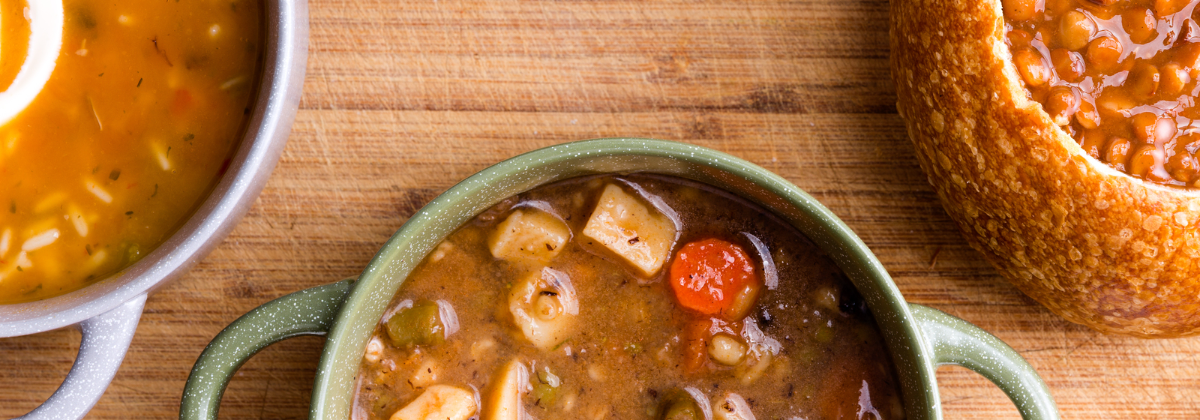The distinction between soup and stew is a fine line that only a few care to define. But when they do, it often leaves you knowing the same, if not less, than before. Well, let me help you out. The difference between soup and stew lies in their textures, bases, ingredients, and cooking styles.
Knowing how to make soup creamy, a stew thicker, and both equally delicious will truly set them apart. But what else? Below, I cover all the differences between soups and stews.
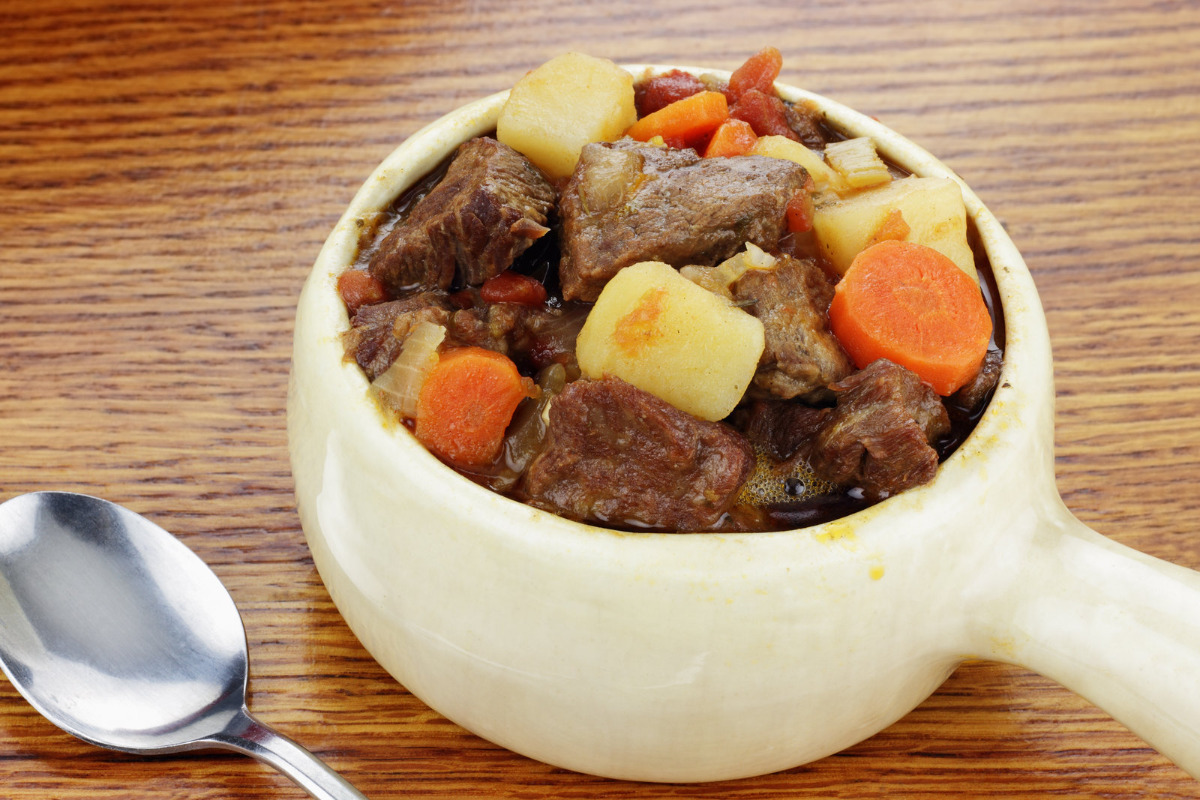
Contents
🤷♂️ What is Soup?
Soup is a liquid dish typically consisting of a broth, stock, or liquid base, combined with various ingredients such as vegetables, meat, or grains, often seasoned for flavor. It’s commonly served hot, and can vary in consistency from thin and clear to thick and hearty.
🤷♀️ What is Stew?
Stew is a thick, hearty dish made by simmering solid ingredients like meat, vegetables, and sometimes legumes or grains in a flavorful liquid or sauce until they are tender. This creates a rich and savory consistency. Stews are often cooked slowly to allow the flavors to meld, creating a well-balanced and comforting meal.
💡 Soup Vs Stew – Differences Between Soup and Stew
Consistency and Texture
Soup often has a more liquid consistency, allowing ingredients to float freely. Stew is thicker, with less liquid, and the ingredients are more densely packed, resulting in a heartier texture.
Cooking Time
Stews generally require a longer cooking time than soups. This extended simmering helps in tenderizing tougher cuts of meat often found in stews, and it allows flavors to meld together more fully.
Amount of Liquid
The hallmark difference lies in the amount of liquid used; soups typically have more, making them thin and brothy, while stews have less liquid and are consequently thicker.
Common Ingredients
The key difference lies in the amount of liquid used by both. Soups typically have more liquid, making them thin and brothy. Stews have less liquid and are consequently thicker.
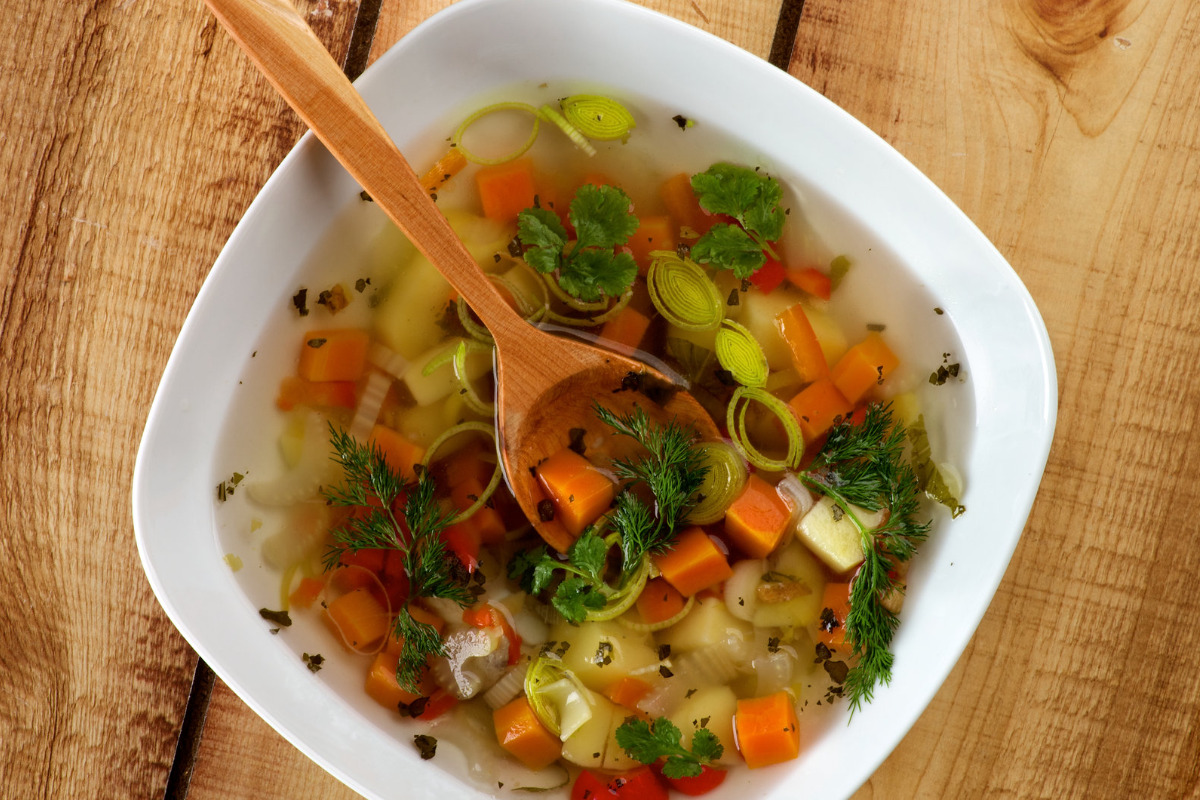
📌 Types of Soup and Stew
Soup Categories
Clear Soups:
Broth-based
These soups, like chicken soup, are characterized by a clear, flavorful liquid made by simmering meat, poultry, or fish bones.
Consommé
A refined clear soup made by clarifying homemade broth, ensuring absolute transparency and concentrated flavor.
Thick Soups:
Purees
Purees are made by blending vegetables or legumes until smooth, with a base that often includes stock or cream, like a classic tomato soup.
Cream Soups
These soups are enriched with cream or milk for a velvety texture. Examples include cream of mushroom or cream of asparagus soup.
Bisques
These are traditionally creamy and smooth soups based on crustaceans, for example, a rich lobster bisque.
Specialty Soups:
Cold Soups
Served chilled, these cold soups are refreshing on a hot day; gazpacho is a popular vegetable-based cold soup.
International Soups
These soups are diverse in origin, like the spicy Thai tom yum or the ubiquitous Italian minestrone. Each carries distinct regional flavors corresponding to where they were made.
Stew Varieties
Meat-Based Stews:
Beef Stew
A hearty stew made with chunks of beef simmered until tender with vegetables like carrots and potatoes in a thickened sauce.
Bouillabaisse
Originating from Marseille, this stew combines various fish species and shellfish with tomatoes, saffron, and herbs.
Coq au Vin
A French stew where chicken is braised with wine, lardons, mushrooms, and optionally garlic.
Seafood Stews:
Cioppino
A fish stew native to San Francisco, typically made with a variety of seafood in a tomato and wine sauce.
Vegetable-Based Stews:
Ratatouille
A French Provencal dish consisting of vegetables stewed together, highlighting eggplant, zucchini, and bell peppers enriched with herbs.
Gumbo
Often includes okra, meat or shellfish, and a variety of vegetables, characterized by its thick, roux-based sauce with Creole and Cajun flavors.
Legume Stews:
Lentil Stew
Incorporates lentils as the main ingredient, cooked with vegetables and often flavored with spices and herbs.
Chili
A robust stew with meat or a vegetarian protein, beans, and a mixture of chili spices, known for its rich, spicy punch.
🧑🍳 Preparation and Cooking Methods
Soup Preparation Techniques
- Focus on the foundational liquid base when preparing soup.
- Craft a stock or broth by simmering bones or vegetables in water with herbs and seasonings, adjusting duration for desired flavor depth.
- Select and prepare ingredients with precision, cutting vegetables and meat into uniform, bite-sized pieces.
- Utilize the crucial technique of sweating vegetables like onions, carrots, and celery to release flavors before introducing the liquid.
- Then add everything together in a pot and bring it to a boil
- Reduce to a simmer after, skimming off any foam or excess fat that surfaces. This lets the flavors marry over a gentle heat
Timing is crucial, so make certain not to overcook the ingredients, so the vegetables maintain some of their texture and the proteins, if present, to be tender.
Stew Cooking Methods
When making stew, your approach should be bolder and more robust, focusing on the key combination of searing and slow cooking. The low and slow cook time allows for the flavors to concentrate and the meat to become fork-tender.
- Begin by searing the meat in a hot pan to develop a rich and caramelized crust.
- Once achieving the desired browning, set the meat aside and, in the same pan, sauté a hearty mix of vegetables, following a process similar to making soup.
- Return the meat to the pan and add just enough liquid to cover the ingredients.
- You can add stock, wine, or a combination thereof for complexity
- Even seasoning with a bouquet garnish for aromatic depth
- After adding some additional ingredients, cover the pot and simmer slowly, often for several hours
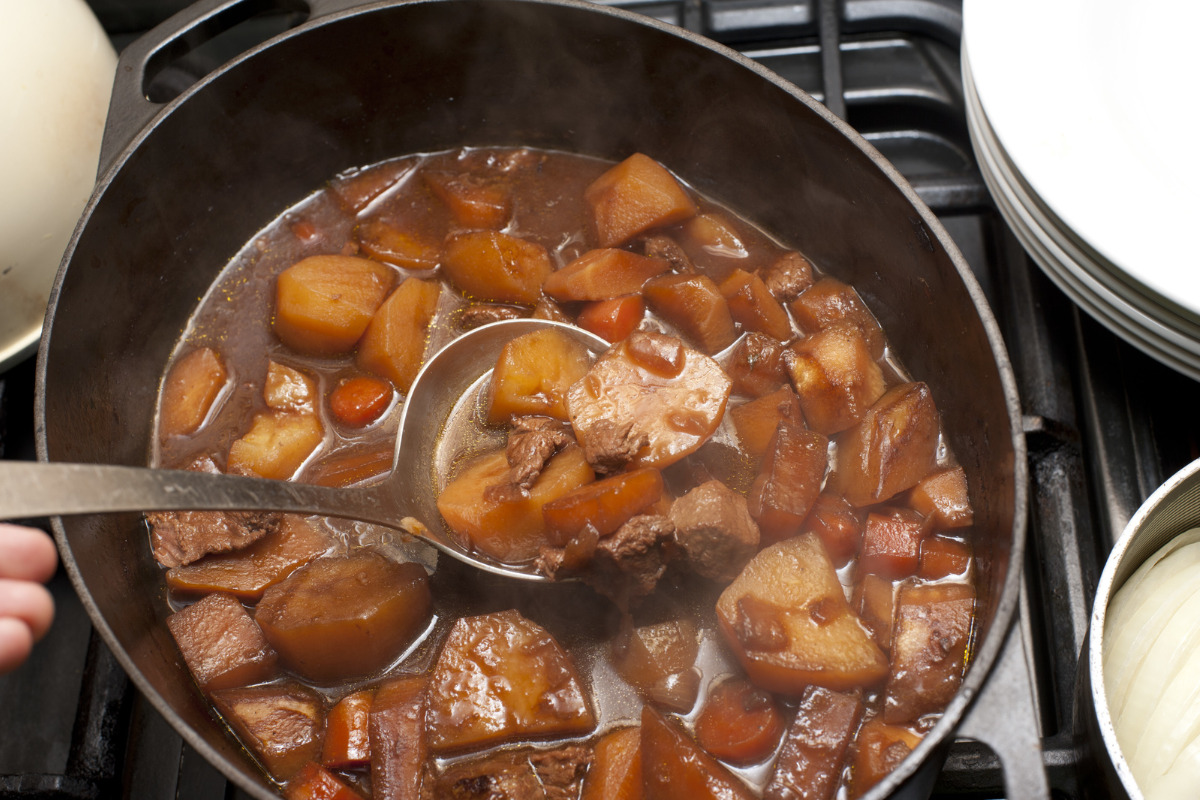
🫕 Storage and Reheating
Storing Leftover Soup
When storing leftover soup, ensure it’s cooled to room temperature before refrigerating. Use airtight containers and aim to consume the soup within 3 to 4 days for optimal freshness, especially if it contains dairy or seafood, as these ingredients can spoil quickly.
For long-term storage, pour the soup into freezer-safe bags or containers, label them with the date, and freeze them, allowing the soup to last for 2 to 3 months in the freezer. You can use my guide to freezing soup for the ways and tips to freezing soup.
Preserving Stew for Later Use
Preserving stew involves a process akin to soup, with a focus on its denser texture. After cooling, store the stew in airtight containers, allowing space for expansion during freezing. For freezing, transfer it to heavy-duty bags or containers, remove air, label it, and freeze for up to 3 months. When reheating, thaw overnight in the refrigerator and warm on the stove over low to medium heat, stirring occasionally to prevent burning.
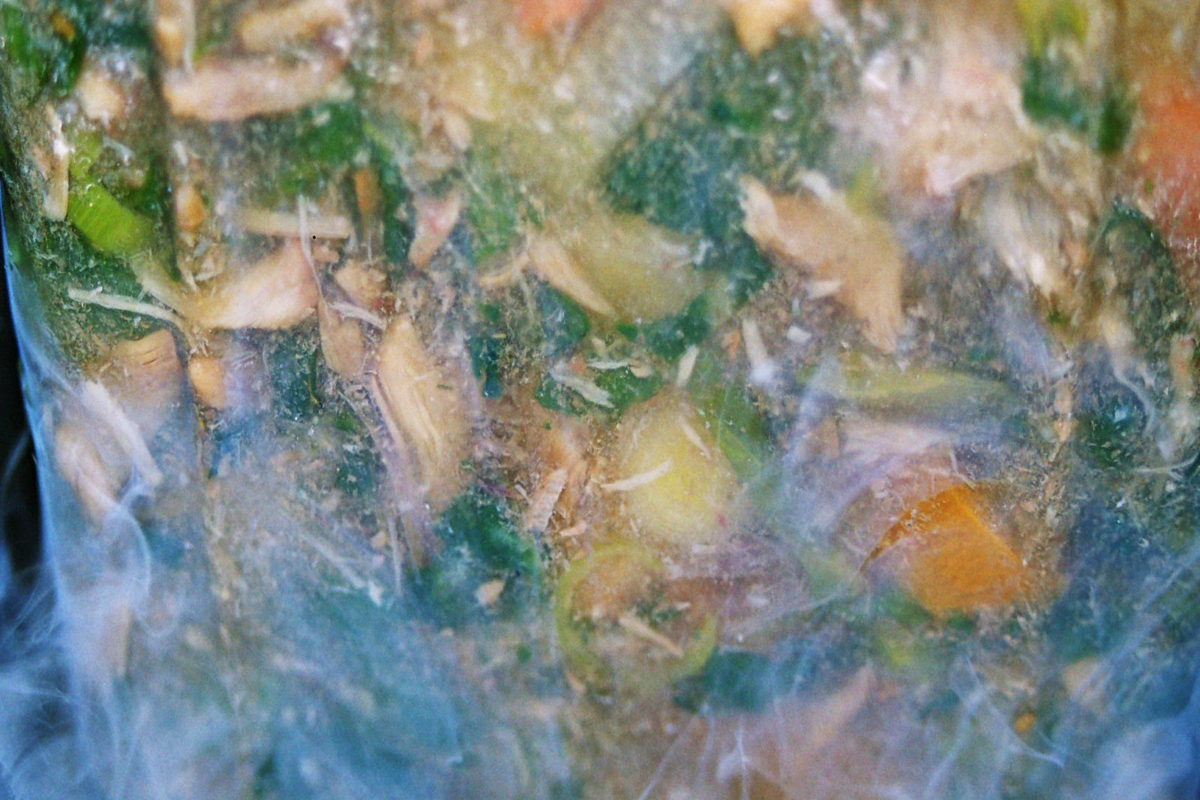
🧐 Frequently Asked Questions
No, soup is generally not thicker than stew. Instead, stews are known for their denser consistency arising from less liquid relative to solid ingredients, coupled with a longer cooking time.
Stews usually have less liquid and are cooked at a lower heat for a longer period, which allows the flavors to meld and intensifies the overall taste. Soups often have a more generous amount of liquid and can range from brothy to creamy textures.
Chicken noodle soup is a beloved classic known for its soothing qualities, while tomato soup is cherished for its rich, tangy flavor, especially when paired with a grilled cheese sandwich.
